WorkUp
Restructuring the interview feature for an AI-powered career development startup
My Role
Product Designer
Timeline
Jan - Jun 2025
Team
14 Designers
1 Product Team
Tools
Figma
Overview
Workup is an AI-powered professional networking app that aims to combine social media and job searching. With a feed that highlights career-centered content, and numerous AI-powered tools to prepare users for recruitment, Workup makes it easy to land a dream job. On the website, users can tailor their resume, conduct practice interviews with AI assistants, and connect with recruiters and other job seekers.
My specific role in the project was to improve the usability of Workup's AI interview feature. Although the feature had great potential and strong use cases, the confusing UI was prone to causing frustration for the user. My goal was to streamline the user flow and reduce friction when navigating the tool.
The Problem
Preparing for interviews can feel overwhelming.
For college students or new graduates, it can be intimidating trying to craft the perfect responses, especially when you don't know what to expect. By allowing users to conduct industry-tailored mock interviews and receive AI-assisted feedback, Workup's AI Interview feature provides students with clear guidance on how to refine their responses and build confidence for the real conversation.
However, although this feature's capabilities were impressive, users found it difficult to navigate. Many users reported feeling discouraged or frustrated by the cluttered interface, which distracted from its full potential. For students already facing the stress of preparing for their first interviews, this added friction could make an already challenging process feel more overwhelming than it needed to be.
- The solution: A restructured user flow to minimize friction in the interview practice experience, allowing students to focus on growth rather than navigation.
Research
Understanding the Current Market
We started with competitive analysis to compare existing platforms that also offered social networking and career development features.
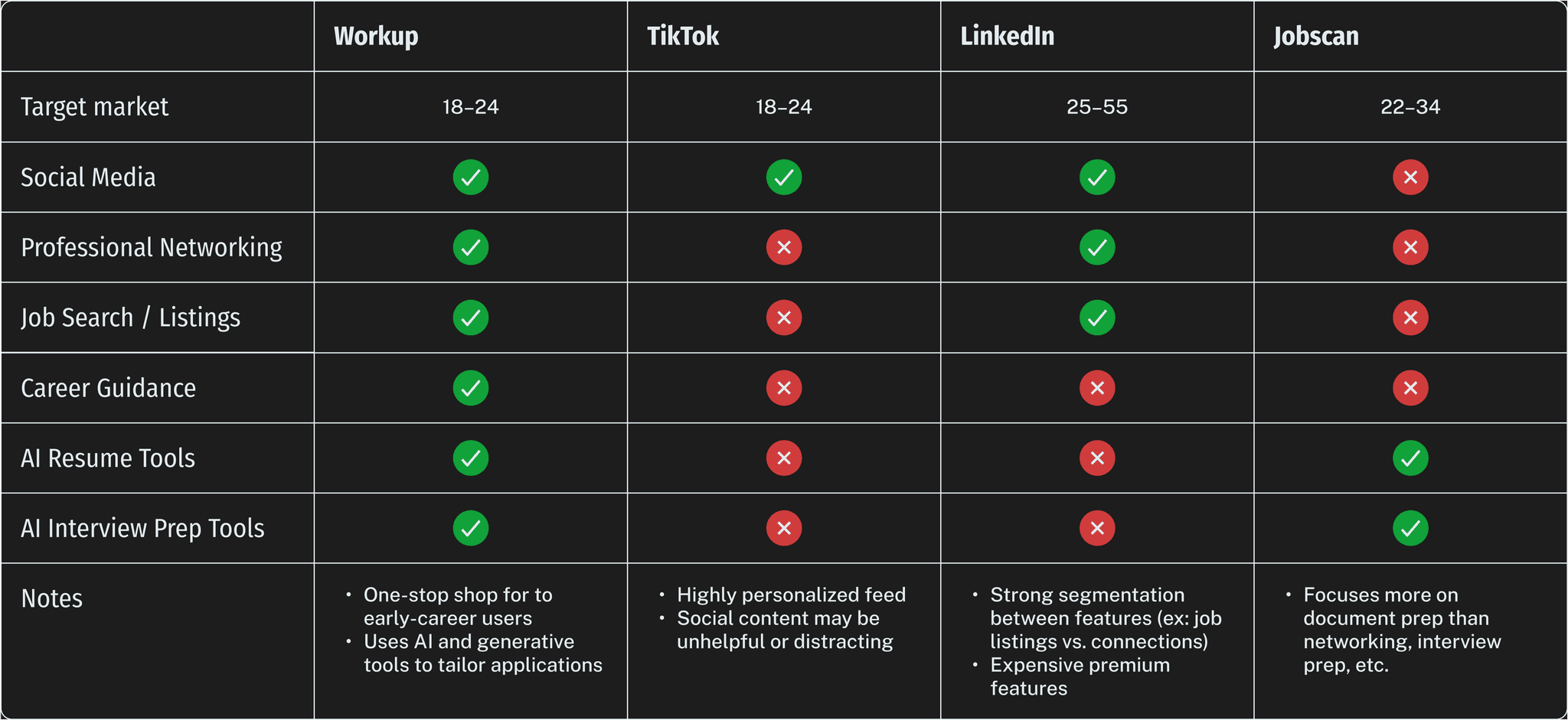
Understanding Users
To understand user perspectives, we administered 50+ surveys and conducted 20+ interviews for Workup's target audience, job-seeking college students. The responses we received helped guide us throughout the design process.
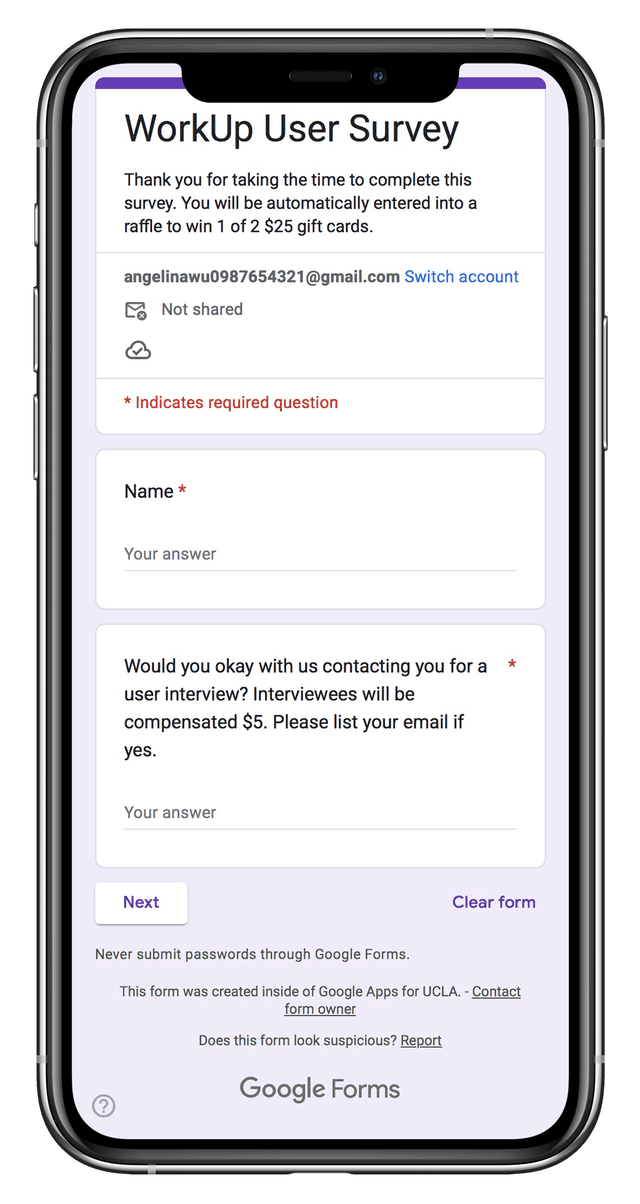
The user survey gave us a preliminary understanding of how college students interacted with AI tools in the job search process.
- "I use ChatGPT's voice function to do mock interviews. My main issue is that it seems more like a list of technical questions rather than an actual organic interview process."
- "[AI's] answers are too general [...]. It mainly helps with generating questions."
- "[AI interview questions] either are too broad in their questions or too niche."
- "I don't know if AI questions will be representative of what will actually be asked. They may be unreliable or biased."
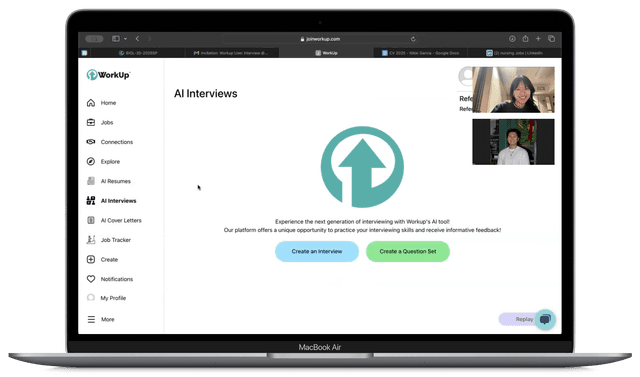
The user interviews gave us an understanding of how a user would actually interact with the site.
- With each interviewee, I walked through a typical flow on Workup. The interview helped me identify high-friction areas in real time.
Getting to the Root
With a newfound understanding of user motivations and challenges, our team put together a detailed design audit of the current Workup website, identifying key friction points. These insights clarified where the user journey was breaking down and where intervention was most urgent.
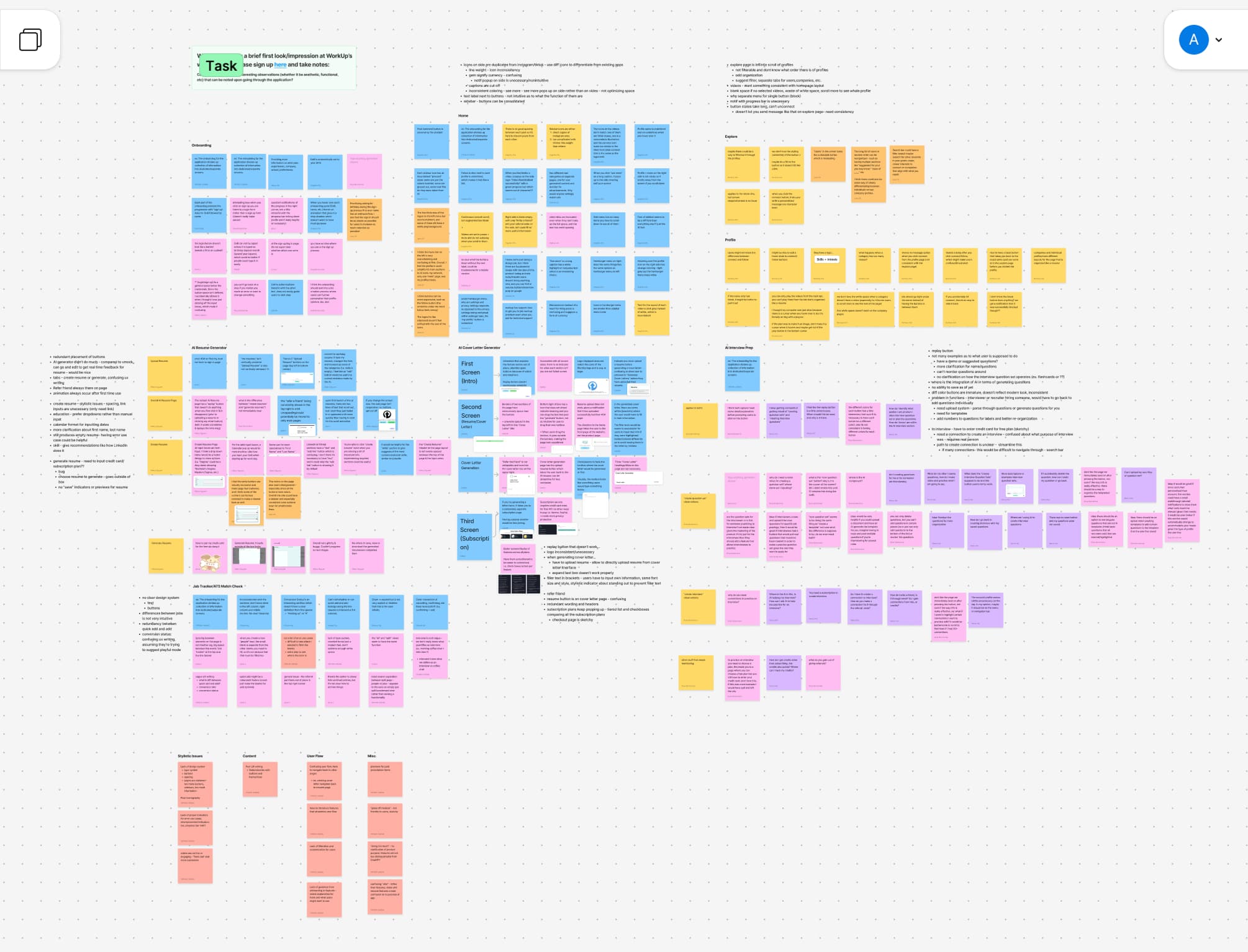
Key Findings
The research led me to three key findings. These findings highlighted the main challenges users faced with the AI interview feature, and provided a focused direction for the subsequent design phase.
An unclear user flow leaves users confused.
Many users struggled to understand where to begin or how to proceed through the interview feature. The absence of a clear, guided pathway resulted in users feeling lost or unsure about the next step. Establishing an intuitive user journey is crucial for supporting users and reducing confusion.
Feedback formatting overwhelms users.
The AI-generated interview feedback was formatted as a dense wall of text, making it difficult for users to quickly identify actionable insights. This overwhelming format limited the usefulness of the feedback, as students struggled to parse out key takeaways or next steps. Structuring feedback into concise, digestible sections would enhance clarity and support more effective learning.
Lack of organization options limits usefulness.
Users were unable to easily save question sets or review past interviews, making it difficult to track progress over time. The absence of organization features such as saving, bookmarking, or accessing previous sessions reduced the long-term value of the tool.
Putting Faces to the Data
Using our research, I developed detailed user personas to humanize the data and guide empathy-driven design. These personas anchored the design process, ensuring each decision addressed real user needs and motivations.
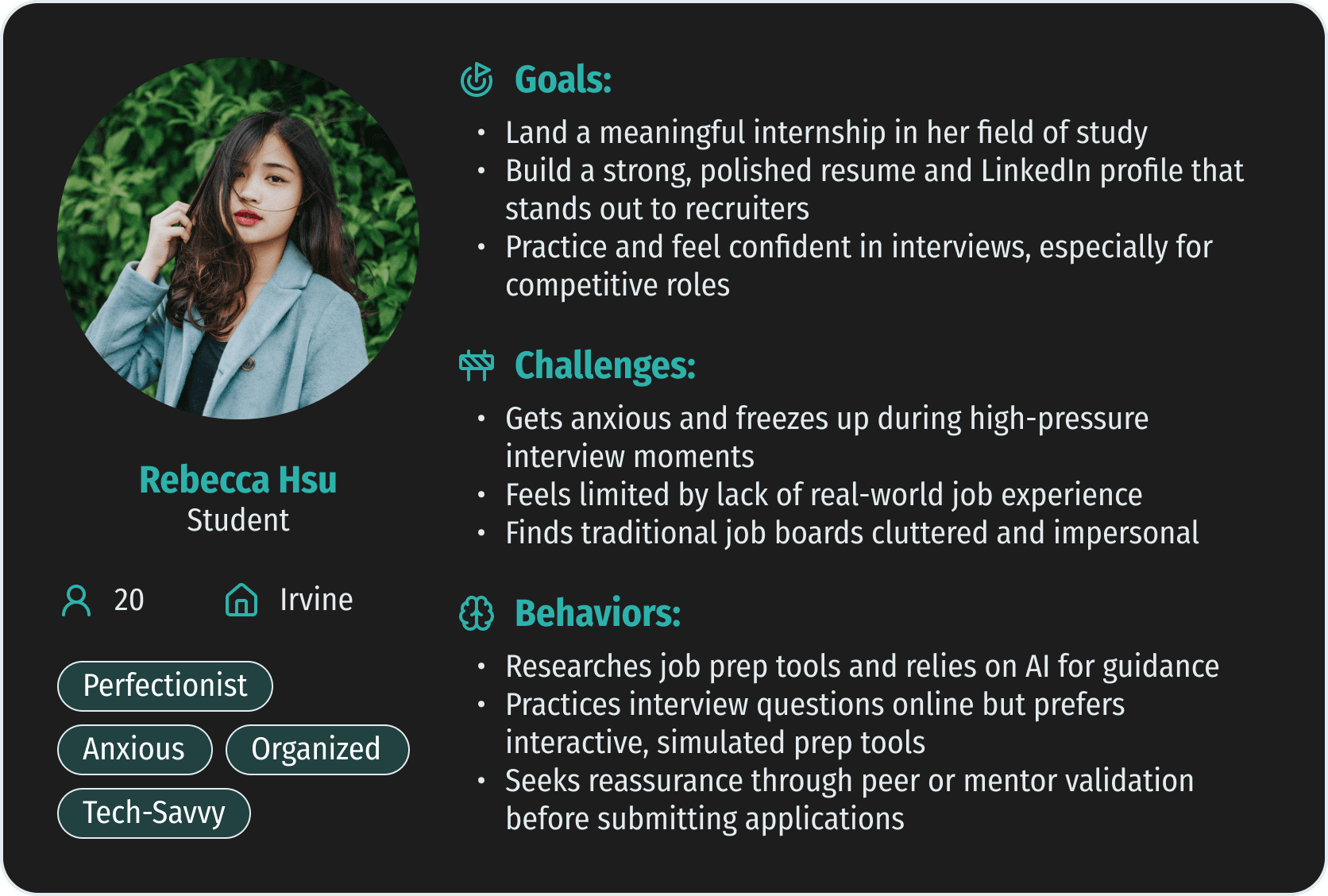
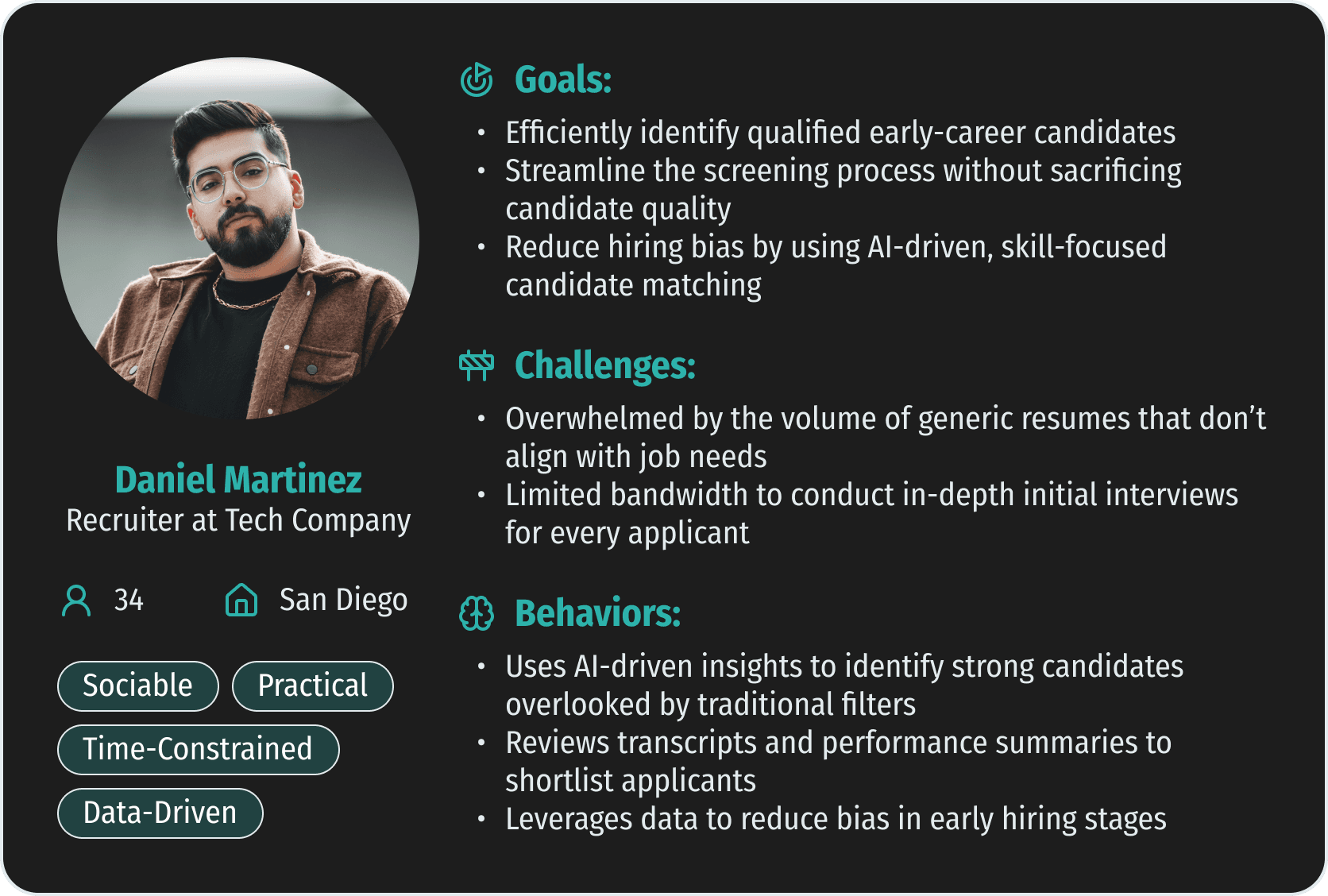
Project Goals
Empower confident preparation.
Enable users to practice interviews and receive actionable AI feedback, helping them build skills and self-assurance.
Streamline the user journey.
Design an intuitive user flow that minimizes friction and confusion, reducing the focus required for navigation.
Support continuous improvement.
Provide organizational tools, so users can track their progress and revisit feedback over time.
Design
Putting it all together...
With insights from research, the audit, and user personas, my team began the design process. We began with a thorough analysis of Workup's current AI Interview feature, sorting key issues into three problem groups.
Problem Group 1
Redundant empty pages disrupt interview setup and add unnecessary steps
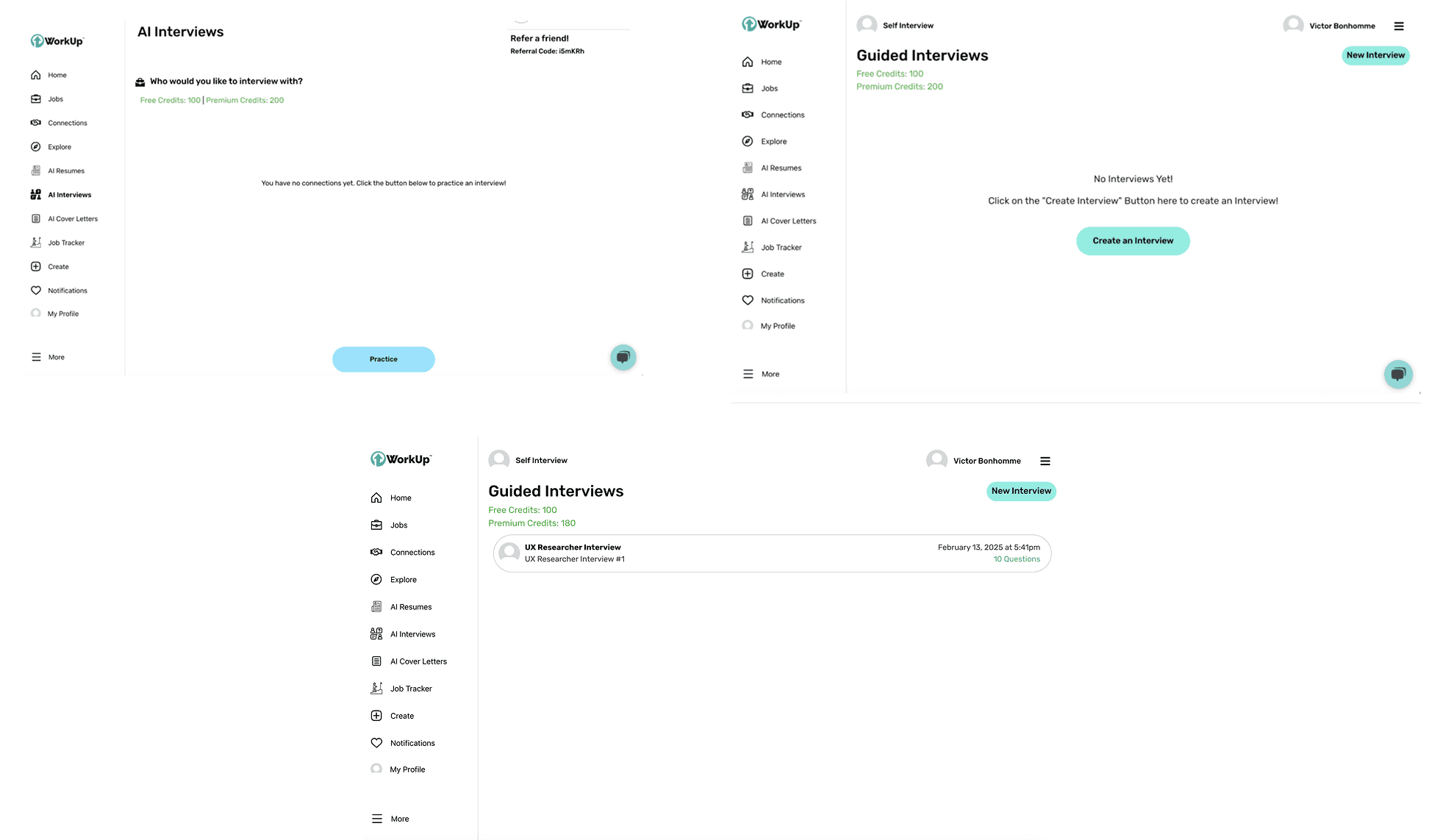
Problem Group 2
Customization features and video call interface feel disconnected
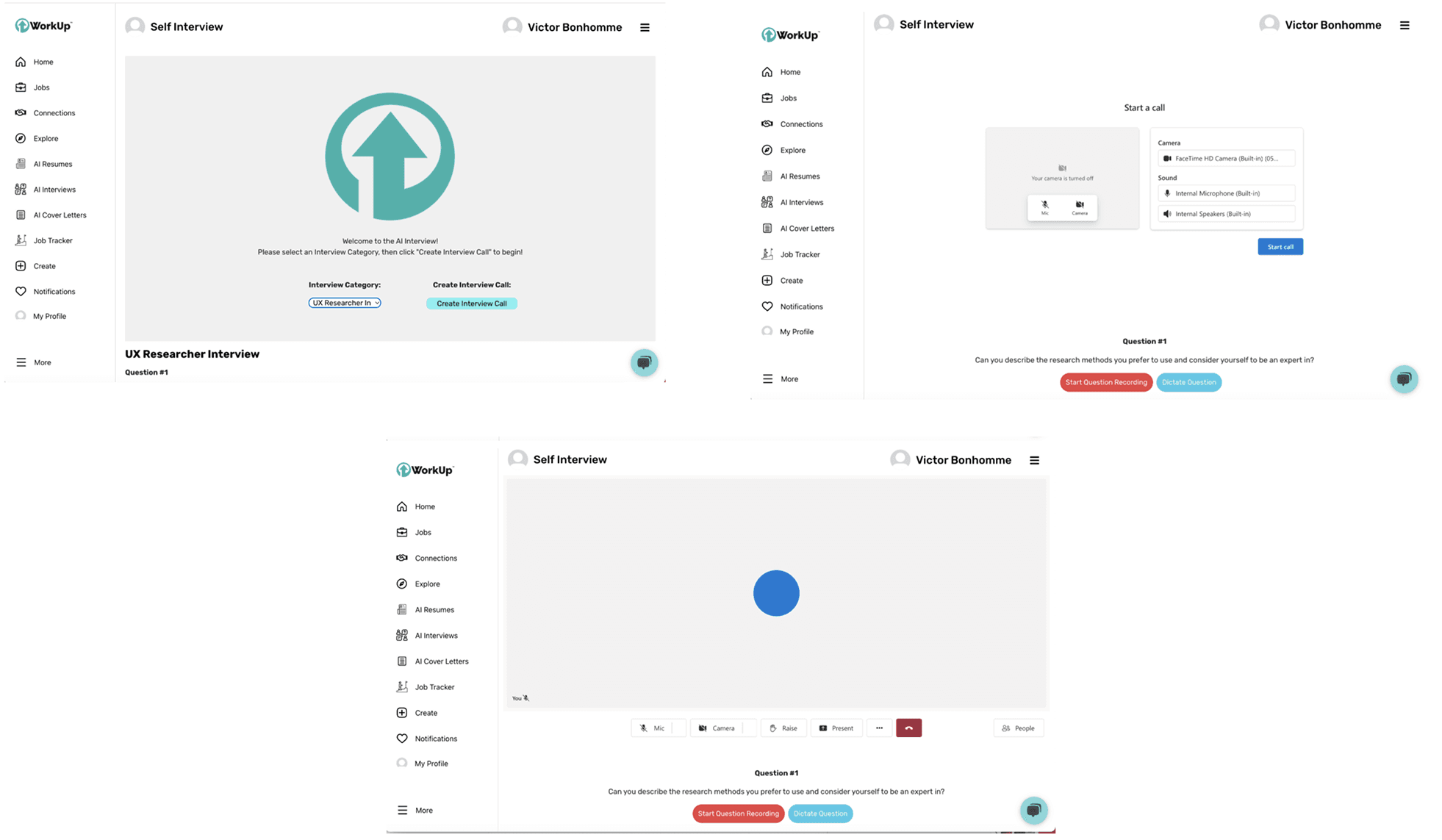
Problem Group 3
Lengthy offboarding process creates friction and delays completion

Low-Fidelity Designs
The primary challenge with Workup's interface was the lack of a clear user flow. For our lo-fi designs, my team aimed to create interfaces that felt effortless to interact with.
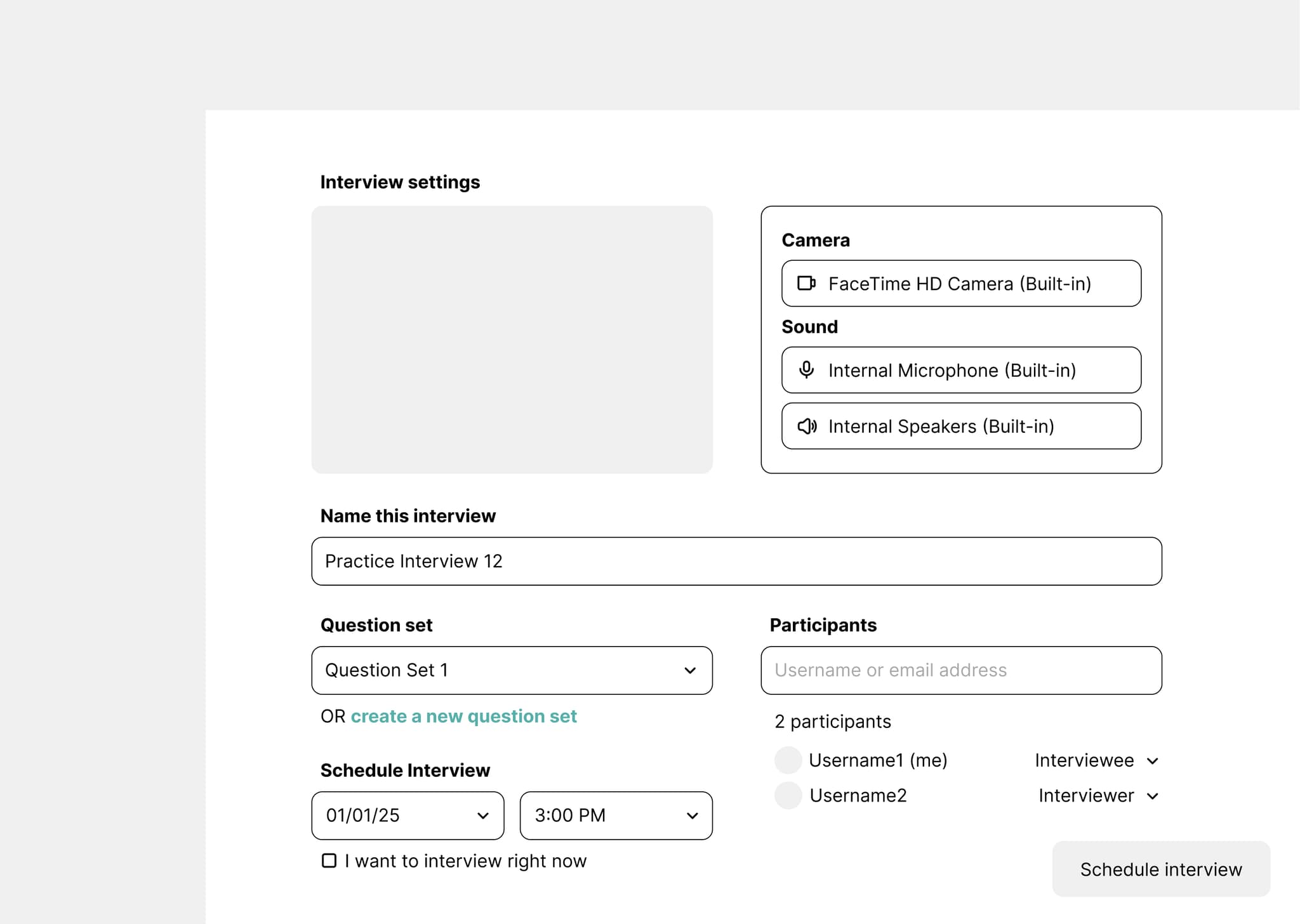
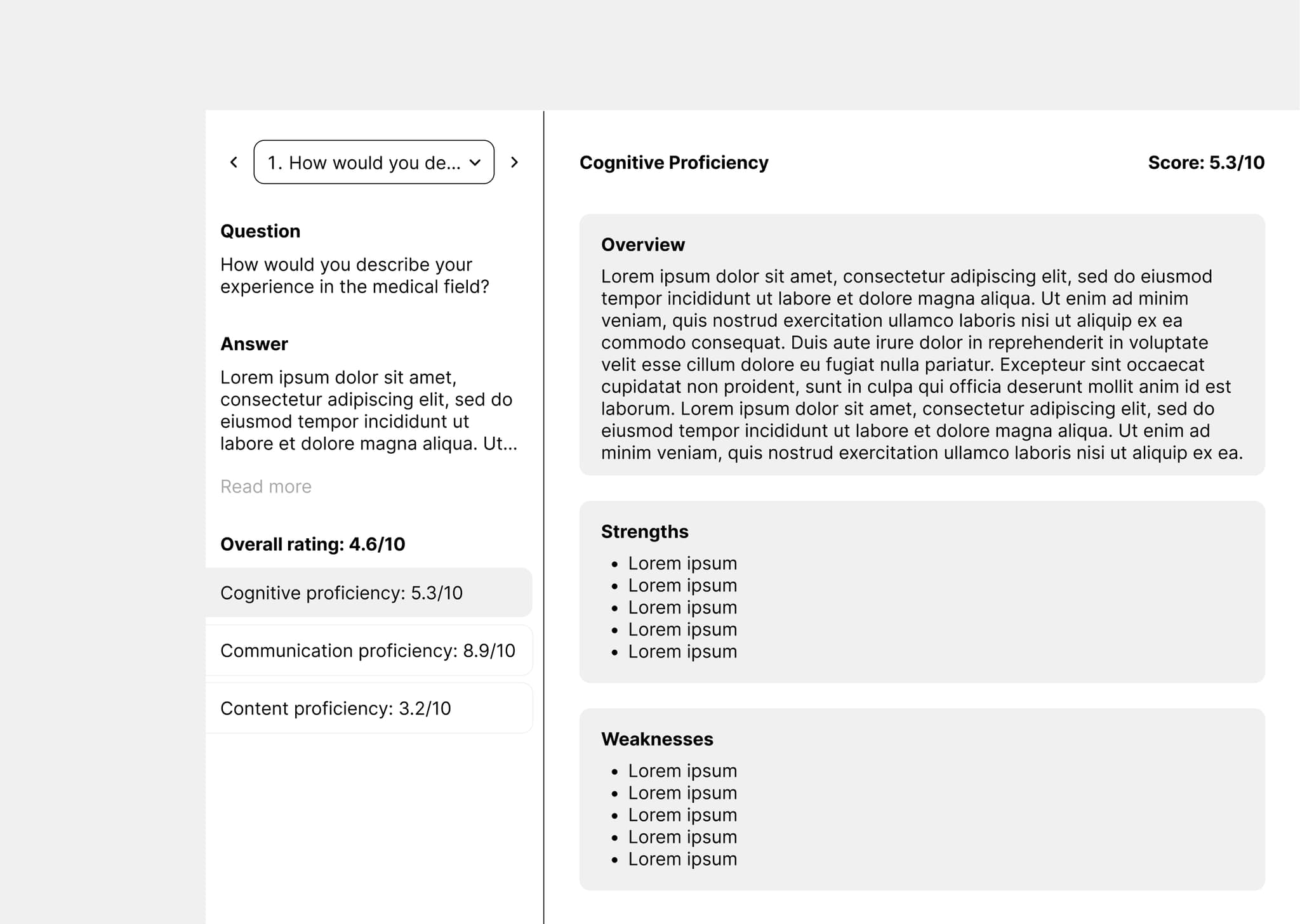
Creating a Design Language
One of the key issues with Workup's interface was its lack of a consistent design system. Based on its existing UI, our team revamped Workup's design system bringing consistency and modernity to user interactions across the website.
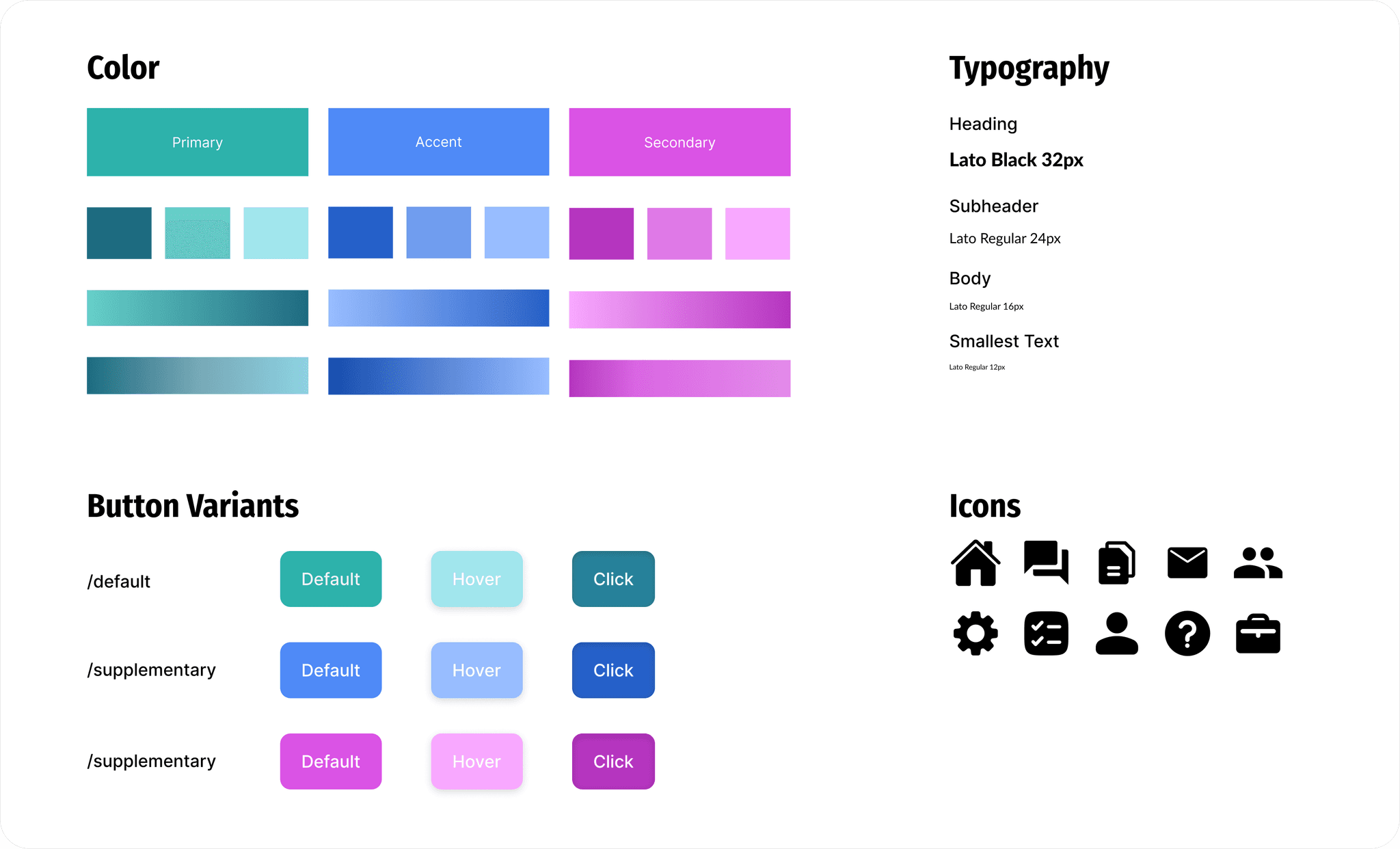
Iterate, iterate, iterate...
The design system made it easier to create mid- and hi-fi designs. Our team iterated our designs for the website through several rounds of feedback, brainstorming, and group design sessions.
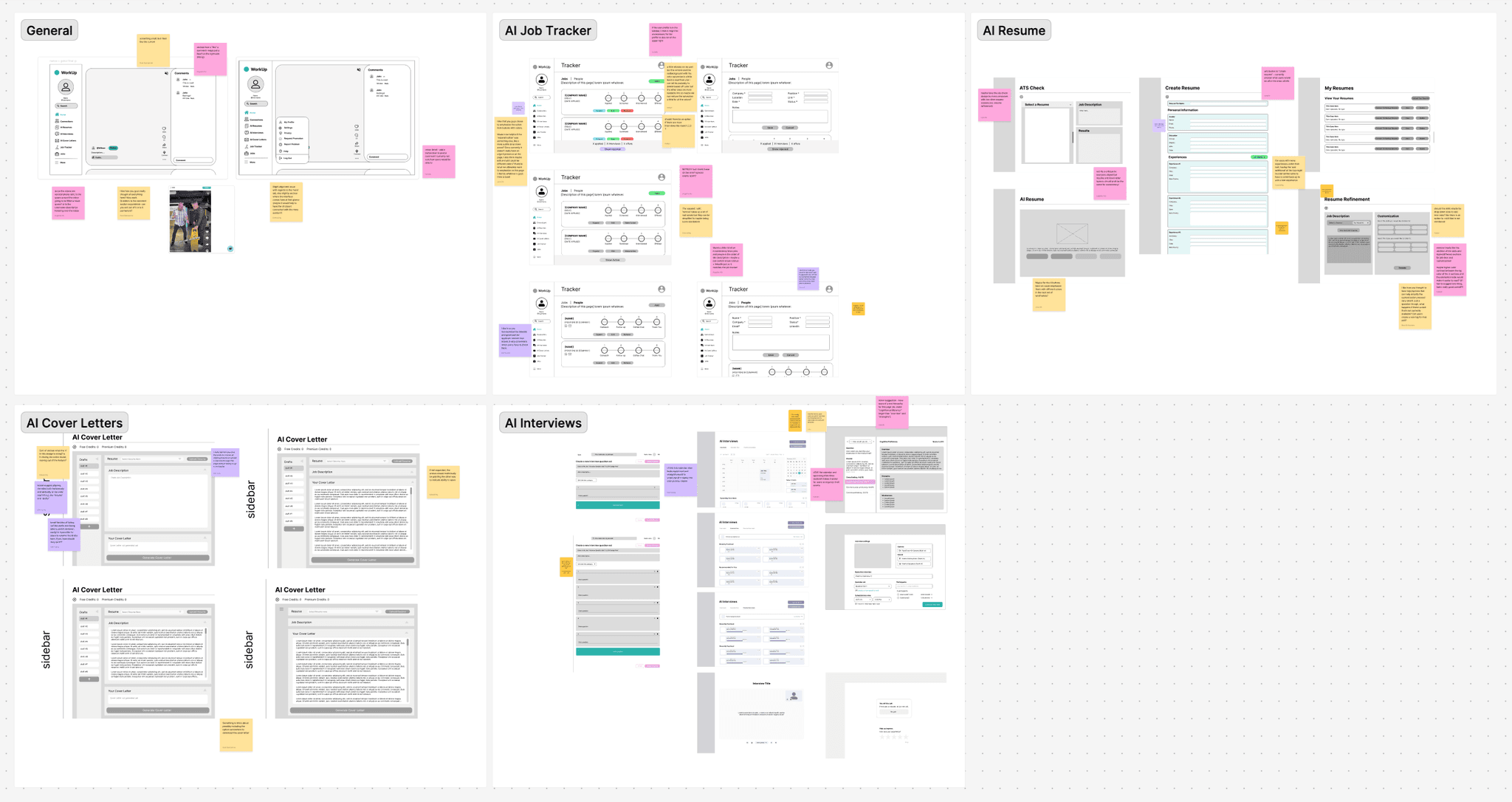

Final Product
The final design for Workup's AI Interview streamlines the user journey, making every step clear and intuitive. By eliminating unnecessary friction, the redesigned interface empowers users to focus on interview preparation and confidently leverage the feature to its full capabilities.
Practice built for perfect
To make the interview creation process as intuitive as possible, I took inspiration from video calling platforms such as Zoom and Google Meet to create an interface that felt like second nature. For the user, this helps make the practice round feel as close as possible to the real thing.
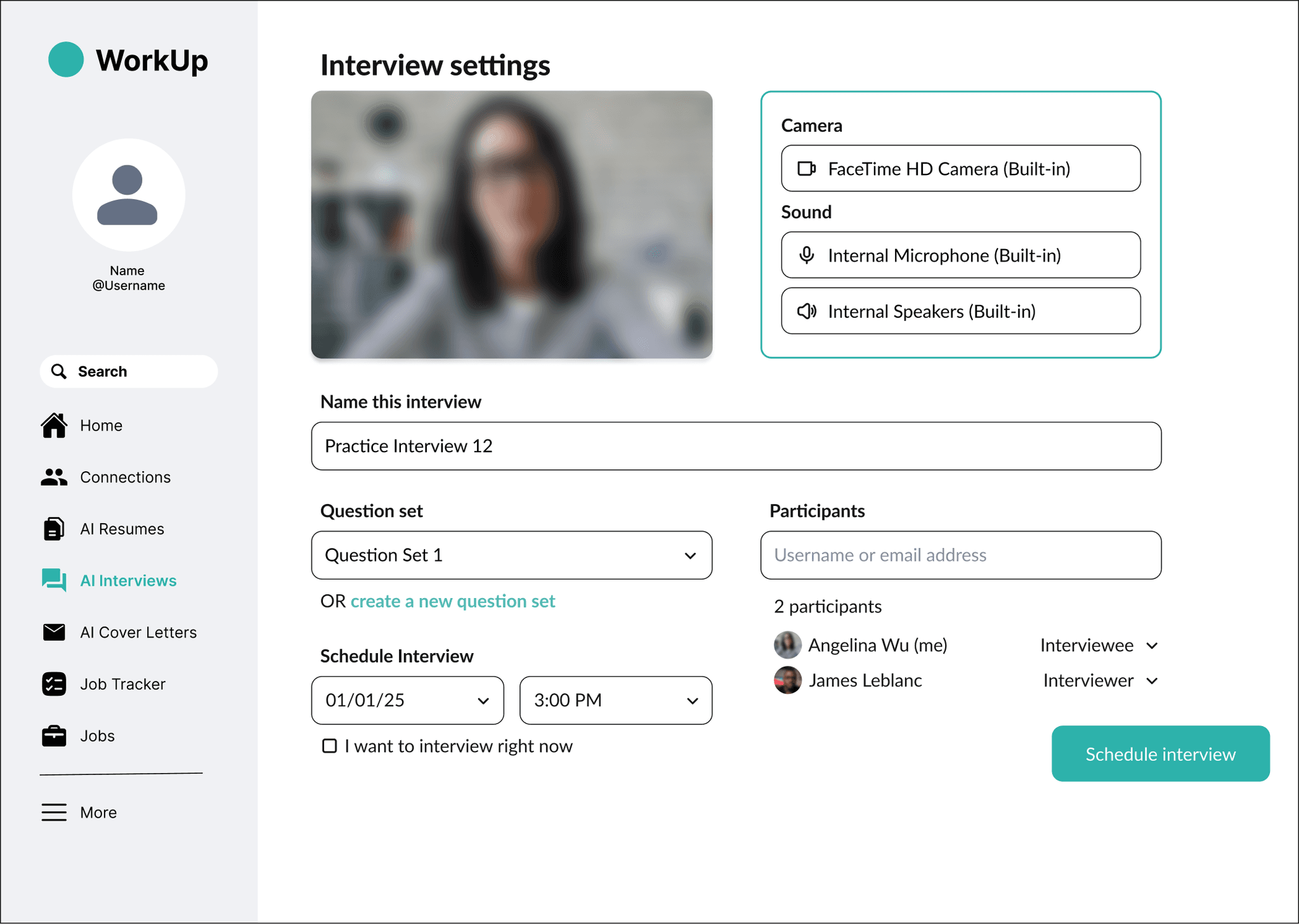
Scheduling that feels seamless
By replacing uncertainty with structure, we turned interview scheduling into a feature that actually supports both candidates and recruiters.
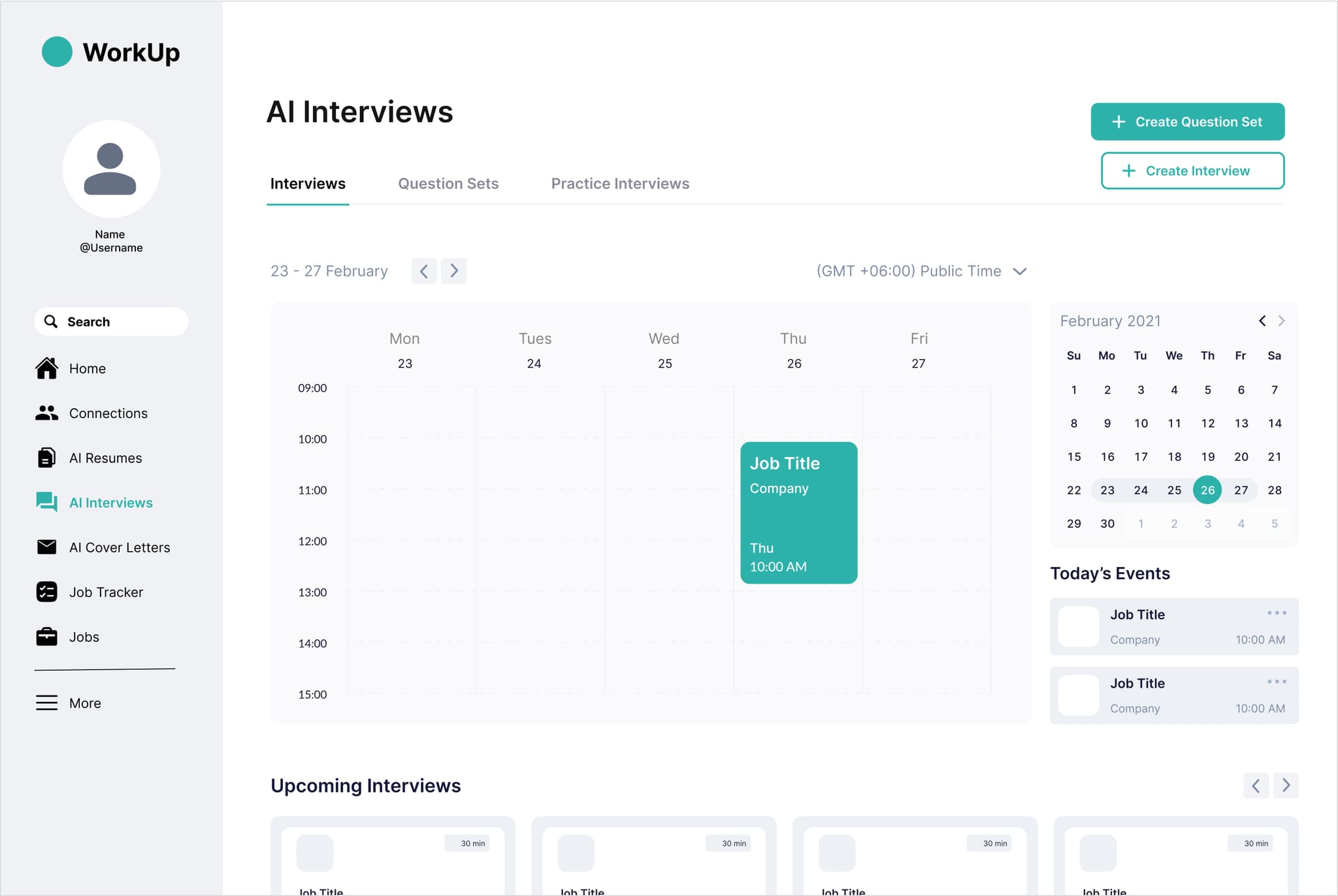
All in one place
Our team built a single "hub" for practice question sets, helping users track progress, stay organized, and prepare for interviews with purpose.
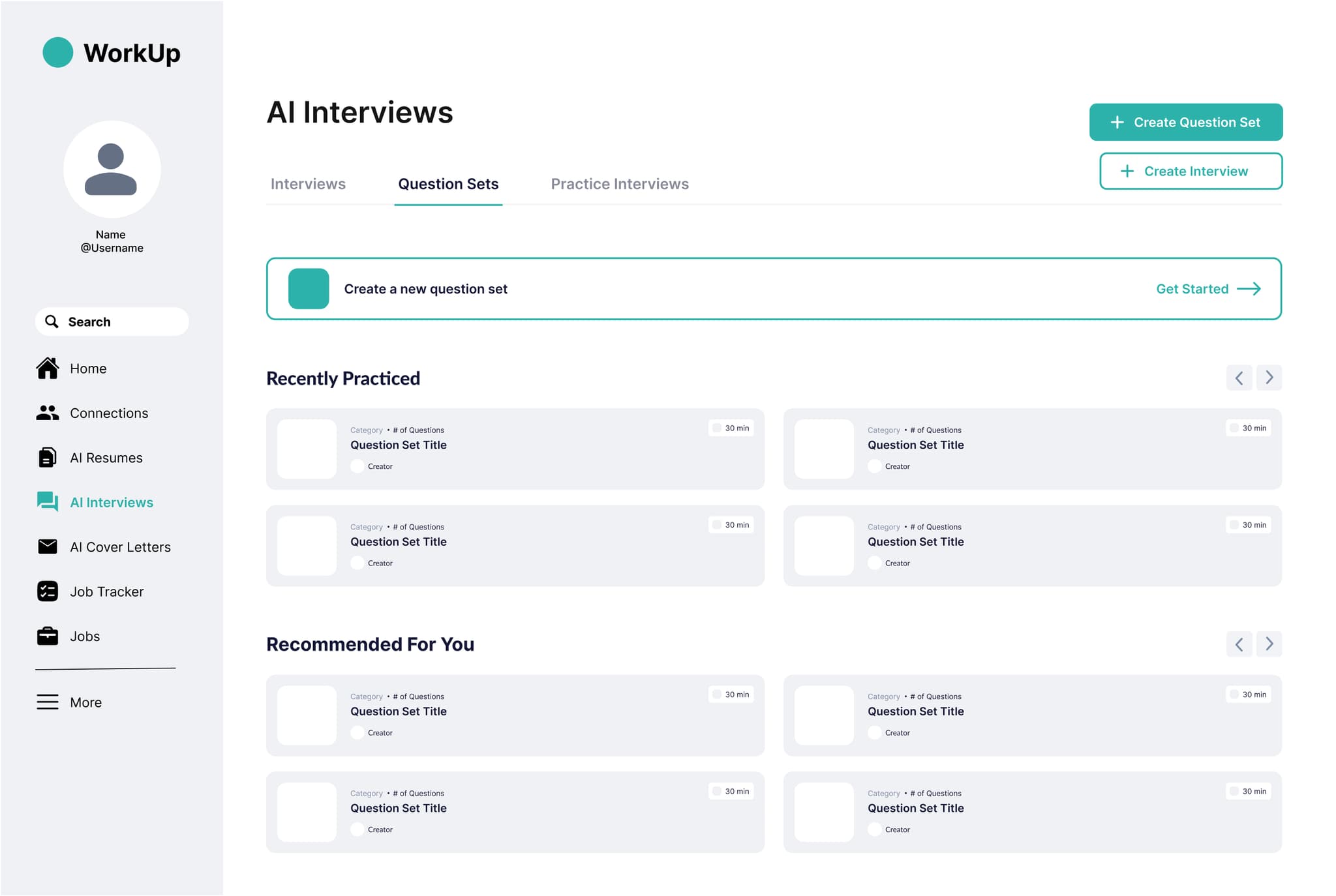
Feedback that drives improvement
I reorganized the structure of the AI-generated feedback page, categorizing feedback into different facets of proficiency. Segmenting the feedback improved readability and provided the user with a more precise metric to empower growth.
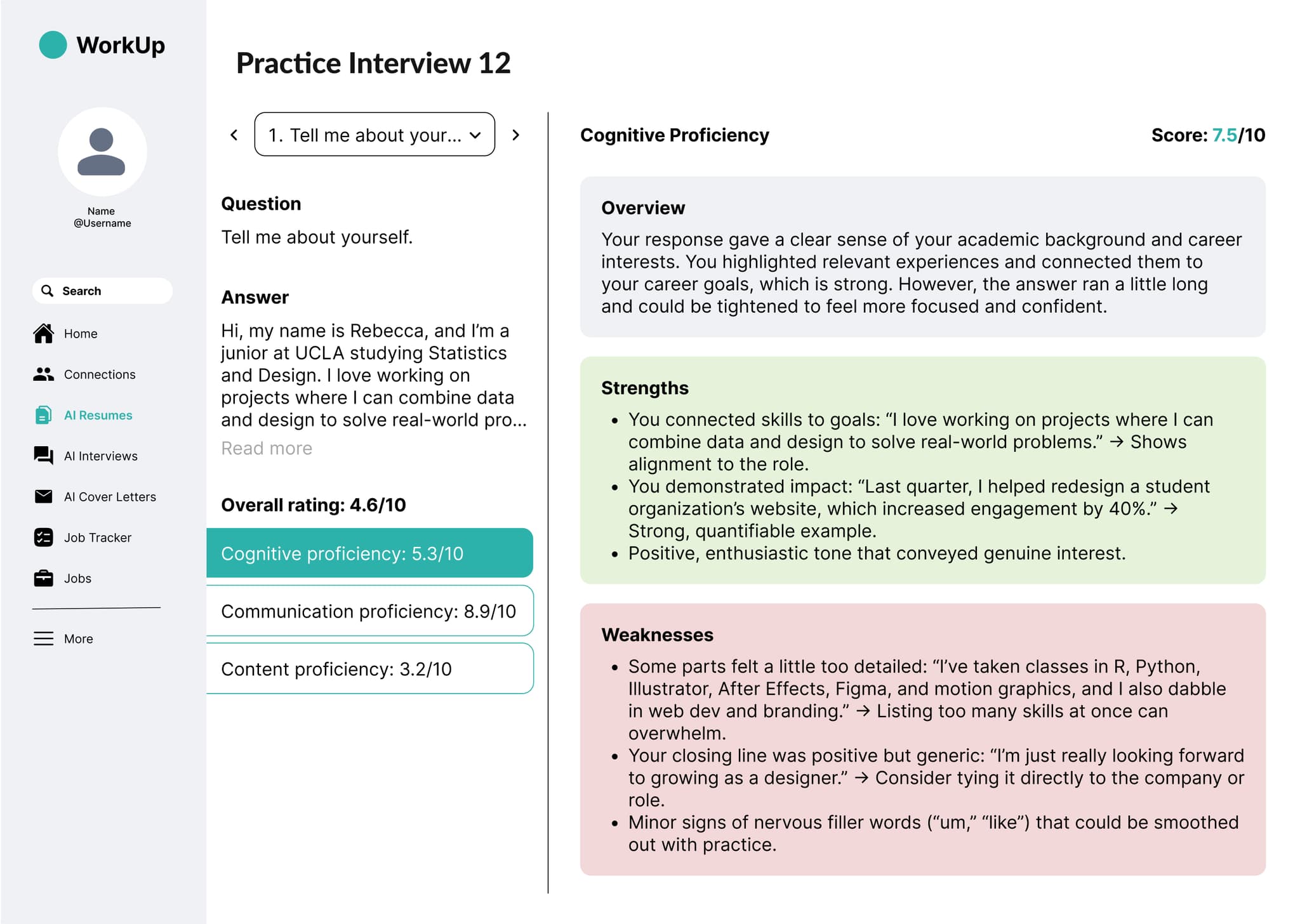
Impact
Users were 50% more likely to engage with the AI interview feature.
Simplifying the user journey prevented users from becoming frustrated with the site, keeping them engaged and focused on their interview preparation.
Feedback comprehension improved dramatically.
By restructuring AI-generated feedback into clear, actionable sections, users reported they could more easily identify strengths and areas for growth, leading to more focused and confident interview preparation.
Organizational features increased ongoing learning by 90%.
The addition of options to save question sets and review past interviews enabled users to track their progress over time, encouraging users to return to the feature continuously throughout their career development journey.
Closing Remarks and Takeaways
User empathy is foundational.
- Spending time with real users, hearing their frustrations, and observing their interactions with the website firsthand shaped every major decision. User interviews revealed friction points that would have been invisible otherwise, reminding me that successful solutions start with listening.
Sometimes the answer is simplicity.
- Simplifying the user flow made a bigger difference than any flashy features designs. When users aren't overwhelmed by options or dense text, they can more easily focus on what matters.